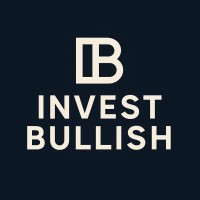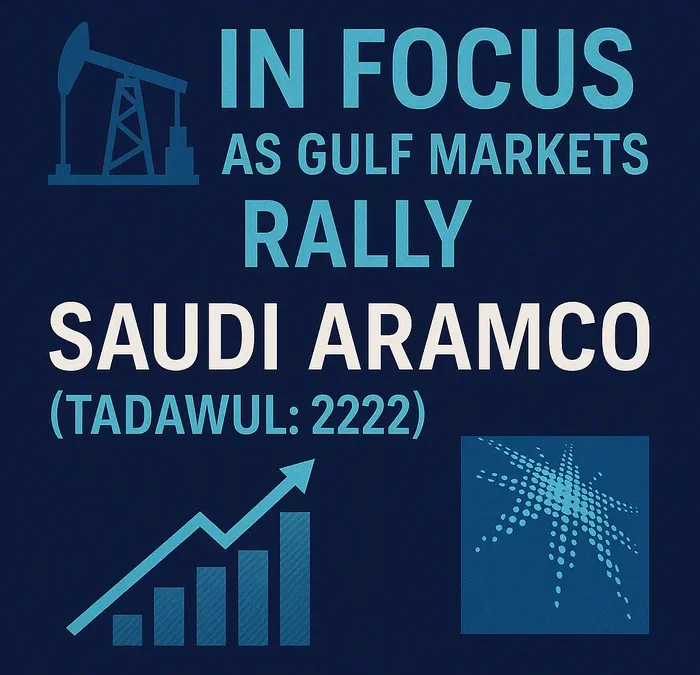Calm in the Gulf: A Catalyst for Oil and Aramco
On June 24, a ceasefire between Israel and Iran, brokered by the United States, brought immediate relief to global markets. Most Gulf indices responded with a sharp rise—Saudi Arabia’s benchmark climbed 2.1%, Dubai surged 3.1%, and Abu Dhabi gained 2.2%, largely driven by banking and real estate optimism.
Brent crude prices declined by nearly 5%, trading around $68 per barrel as geopolitical risk premiums faded. While Saudi Aramco’s stock showed minimal reaction at first, it later moved higher in tandem with broader Gulf momentum.
In the backdrop, OPEC+ announced a production increase of 411,000 barrels per day starting in August. Meanwhile, the IMF revised Saudi Arabia’s GDP outlook upward to 3.5%, crediting state-led mega projects under Vision 2030. These macro developments form a bullish case for Aramco’s positioning in both oil supply and economic strategy.
Saudi Aramco Stock Snapshot
| Metric | Value (As of June 29, 2025) |
|---|---|
| Ticker | 2222.SE (TADAWUL) |
| Stock Price | SAR 37.50 (~USD 10.00) |
| Market Cap | ~$2.0 Trillion |
| PE Ratio (TTM) | 13.7x |
| EPS (TTM) | SAR 2.73 |
| Dividend Yield | ~5.8% |
| Net Income (FY 2024) | $161 Billion |
| Return on Equity (ROE) | 36.1% |
| Return on Assets (ROA) | 22.4% |
| Debt-to-Equity Ratio | 0.29 |
| Current Ratio | 1.81 |
| Free Cash Flow (FCF) | $93 Billion |
| Oil Production (May 2025) | ~12 million barrels/day |
| Planned Output Growth (Aug) | +411,000 barrels/day |
This table highlights Aramco’s solid balance sheet, consistent profitability, and investor-attracting dividend profile.
Key Drivers Behind Aramco’s Strength
Geopolitical Risk Repricing
The ceasefire effectively removed the Middle East risk premium from oil markets. Lower shipping insurance rates and a decline in tanker freight costs are directly beneficial to Aramco, improving net margins on every barrel exported. Investors are shifting focus from risk-hedging to yield capture and value plays across the Gulf, with Aramco sitting at the nexus of both.
OPEC+ Output Expansion
With the OPEC+ production hike, Saudi Arabia’s incremental supply benefits Aramco directly. More volume offsets the dip in oil prices. At scale, even marginal volume gains translate into billions in additional revenue. Crucially, this production increase signals alignment between global supply stability and Saudi fiscal objectives.
Domestic Economic Momentum
Saudi Arabia’s internal growth narrative, tied to its Vision 2030 agenda, is accelerating. From NEOM city construction to digital infrastructure, energy consumption is rising domestically. Aramco’s integrated value chain—from upstream to refining and petrochemicals—positions it to capitalize on internal demand just as much as exports.
Risk Factors to Watch
Oil Price Volatility
Despite current stability, oil remains vulnerable to macroeconomic shifts. A sharp global slowdown or renewed tensions could destabilize Brent pricing and weigh on Aramco’s top line.
Long-Term Energy Transition
Global decarbonization efforts, particularly in Europe and Asia, could lead to shrinking long-term demand for crude oil. Aramco will need to aggressively pursue low-carbon alternatives and hydrogen to maintain relevance.
Policy Reversals by OPEC+
Although production is currently expanding, any future cuts by OPEC+ to balance the market could restrict Aramco’s growth runway.
Investment Scenarios
| Scenario | Oil Price | Production Outlook | Stock Impact |
|---|---|---|---|
| Bull Case (25%) | $70–75/bbl | Higher output, strong margins | Stock rallies 10–15% |
| Base Case (50%) | $65–70/bbl | Modest output growth | Stock trades sideways |
| Bear Case (25%) | <$60/bbl | OPEC+ cuts or slowdown | Stock falls 10–15% |
Why Aramco Still Matters to Global Investors
Dividend Powerhouse
With a near 6% yield, backed by $93 billion in FCF, Aramco is a dividend fortress in an increasingly volatile global equity market.
Value Investor Magnet
With a relatively low PE ratio and high earnings visibility, Aramco trades like a value stock while generating returns like a growth stock. It provides exposure to energy without the volatility of U.S. shale names.
Strategic Energy Asset
Aramco isn’t just a business—it’s a national asset tied to Saudi Arabia’s economic transformation. Its vertical integration across oil, gas, refining, and now hydrogen and carbon capture makes it a long-term anchor in global energy.
What to Watch Next
- OPEC+ Policy Moves: Production adjustments will affect short-term margins.
- Q3 Earnings Report: Due in late July, likely to confirm margin performance and dividend outlook.
- Vision 2030 Updates: Project rollouts in transport, energy, and construction could trigger domestic demand surges.
- Oil Inventory Reports: U.S. and Chinese demand will shape crude price momentum.
Final Verdict
Saudi Aramco remains a compelling play for dividend seekers, value investors, and those seeking stable exposure to oil markets. The recent Gulf rally has reaffirmed investor confidence in the region’s resilience and policy-driven stability. At SAR 37.50, the stock is not in “deep value” territory, but it remains a cornerstone equity with low downside and modest upside.
Recommendation:
- Hold if you already own it – the dividend justifies the wait.
- Accumulate on dips – especially if Brent falls below $65 temporarily.
- Avoid for hypergrowth portfolios – this is a defensive, yield-centric stock, not a moonshot.

